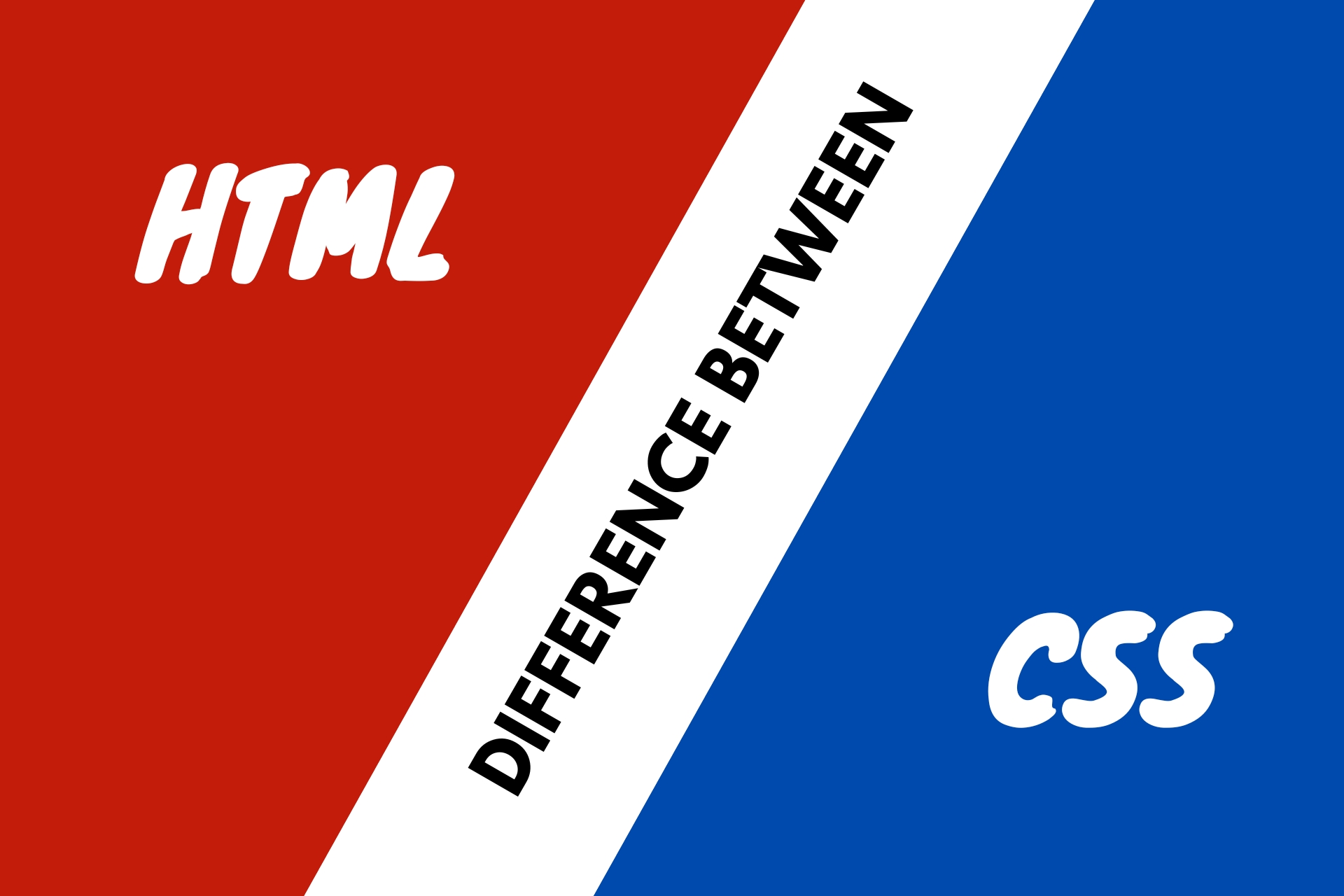
Difference Between HTML and CSS
HTML (HyperText Markup Language) and CSS (Cascading Style Sheets) are fundamental technologies used in web development, but they serve different purposes. Here's a breakdown of their differences:
HTML (HyperText Markup Language)
Purpose:
HTML is used to structure content on the web. It defines the meaning and structure of web content.
Function:
HTML elements are the building blocks of web pages. They organize content such as headings, paragraphs, links, images, lists, and more.
Syntax:
HTML uses tags enclosed in angle brackets, like <html>, <body>, <h1>, <p>, etc. These tags usually come in pairs: an opening tag <tagname> and a closing tag </tagname>.
Example:
CSS (Cascading Style Sheets)
Purpose:
CSS is used to control the presentation, formatting, and layout of web pages. It enhances the appearance of HTML elements.
Function:
CSS describes how HTML elements should be displayed. It can control things like colors, fonts, spacing, alignment, and positioning.
Syntax:
CSS uses selectors to target HTML elements and applies styles to them. The syntax includes a selector followed by a block of style rules in curly braces {}.
Example:
Key Differences
Role:
HTML structures the content, while CSS styles the content.
Syntax:
HTML uses tags to define elements, whereas CSS uses selectors and declarations.
Interdependency:
HTML can exist without CSS, but CSS requires HTML to apply styles.
Placement:
HTML is typically placed within an .html file, whereas CSS can be placed within an HTML file using <style> tags, within the HTML elements using the style attribute, or in separate .css files linked to the HTML document.
Integration
HTML and CSS are often used together to create web pages. An example of integration is:
And the styles.css file:
In summary, HTML is used to define the content and structure of web pages, while CSS is used to style and layout those web pages.




Share Link
Or copy link